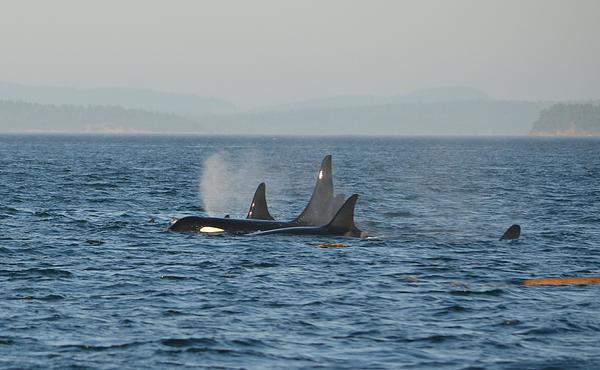.jpg)
Scottish Fins and Flukes
By Emily Burton, Conservation Officer
There’s a magic about whales and dolphins. Catching sight of them, even just for a second, feels like glimpsing a different world. Like seabirds, cetaceans bridge the gap between life on land and life below the waves, reminding us of the rich biodiversity beneath the water’s surface.
People are often surprised when they hear about the amazing variety of cetaceans which can be seen from the Scottish coast. From ocean giants like Sei whales cruising by the West coast, to orca in the North, and humpbacks in the Firth of Forth, the Scottish coast holds huge potential for anyone on the lookout for marine mammals. In fact, more than 28 species of cetaceans can be seen in Scottish waters, and around 20 of these are spotted regularly.
.jpg)
Perhaps our most well-known East coast resident is the bottlenose dolphin. Chunky and robust, Scottish bottlenose dolphins are the most northerly population of their species in the world and have especially adapted the colder climate, growing up to 4 metres in size. A hooked, pointy dorsal fin sits in the centre of their back, often marked with unique scratches or rake marks which set individuals apart, a bit like our fingerprints.
Behaviour is a key feature which can help to distinguish one cetacean species from another. For example, bottlenose dolphins are usually seen in pods of between 3 and 30 animals and are very ‘surface active’, sometimes pulling off incredible acrobatic displays by jumping high into the air. However, some species aren’t quite so keen to put on a show. The harbour porpoise has a ’shy’ reputation and doesn’t spend much time on the surface. They don’t often approach boats or breach out of the water, and have the nickname ‘puffing pig’, as on very calm days along the coast you can sometimes hear them breathing before you spot them.
Another favourite around the Scottish coast is the iconic orca. Although they are sometimes referred to as the ‘killer whale’, orca are actually the largest species of dolphin in the world. They are large and rounded, easily identifiable by their black and white patterning and sizeable dorsal fin. Dorsal fins are a particular give-away for adult males, as the fin alone can grow to a staggering 1.8 metres tall (5 feet 9 inches). You are most likely to spot a pod of orca on the north coast of Scotland, particularly around the Northern Isles, but they are not unheard of elsewhere.

Particularly breath-taking are the ocean giants—the whales. Some incredible whale species can be seen around Scotland, including the second largest mammal on the planet, the fin whale. Fin whales are baleen whales, meaning they have no teeth. Instead, they have hundreds of hard, flexible plates of baleen inside their mouth. Each plate has a hair-like fringe on the inner edge which acts like a strainer, allowing them to sift enormous quantities of krill and small schooling fish from the water. Other whales (like sperm whales) have enormous teeth and feed on larger sea creatures to survive, using echolocation to hunt and navigate the ocean depths.
With a lot of patience, warm clothing, and a pair of binoculars, anyone can watch for whales and dolphins around the Scottish coast. However, if you want to learn more about cetacean ID, behaviour, and contribute to conservation, you might consider training up as a WDC Shorewatch volunteer.
.jpg)
WDC Shorewatch is a network of volunteers trained to monitor whales and dolphins at sites around the Scottish coastline, raising awareness and capturing vital data to protect these amazing species. All Shorewatch volunteers attend a free, half-day training course led by the cetacean experts at WDC. During this session, they learn how to identify the common whale, dolphin and porpoise species found in Scottish waters and find out how to carry out a 10-minute Shorewatch. We’re excited to be supporting a brand new Whale and Dolphin Conservation Shorewatch site in North Berwick! You can find out more about the site and sign-up to training here.
If it’s more casual whale watching you’re looking for, there are lots of platforms you can look to give you up-to-date information about the latest sightings in your area. Here in the Firth of Forth, the fantastic Forth Marine Mammals page keeps us in the loop about what’s been spotted. A simple google search should point you in the right direction for a similar platform near you.
Happy whale watching and good luck!
